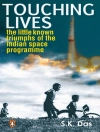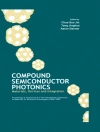HANDBOOK OF FLEXIBLE AND SMART SHEET FORMING TECHNIQUES
Single-source guide to innovative sheet forming techniques and applications, featuring contributions from a range of engineering perspectives
Handbook of Flexible and Smart Sheet Forming Techniques presents a collection of research on state-of-art techniques developed specifically for flexible and smart sheet forming, with a focus on using analytical strategies and computational, simulation, and AI approaches to develop innovative sheet forming techniques. Bringing together various engineering perspectives, the book emphasizes how these manufacturing techniques intersect with Industry 4.0 technologies for applications in the mechanical, automobile, industrial, aerospace, and medical industries.
Research outcomes, illustrations, case studies, and examples are included throughout the text, and are useful for readers who wish to better understand and utilize these new manufacturing technologies.
Topics covered in the book include:
- Concepts, classifications, variants, process cycles, and materials for flexible and smart sheet forming techniques
- Comparisons between the aforementioned techniques and other conventional sheet forming processes, plus hardware and software requirements for these techniques
- Parameters, responses, and optimization strategies, mechanics of flexible and smart sheet forming, simulation approaches, and future innovations and directions
- Recent advancements in the field, including various optimizations like artificial intelligence, Internet of Things, and machine learning techniques
Handbook of Flexible and Smart Sheet Forming Techniques is an ideal reference guide for academic researchers and industrial engineers in the fields of incremental sheet forming. It also serves as an excellent comprehensive reference source for university students and practitioners in the mechanical, production, industrial, computer science engineering, medical, and pharmaceutical industries.
Tabla de materias
About the Editors xiii
List of Contributors xvii
Preface xxi
1 Incremental Sheet Forming – A State-of-Art Review 1
K. S. Rudramamba, M. Rami Reddy, and Mamatha Nakka
1.1 Introduction to Incremental Sheet Forming 1
1.2 Incremental Sheet Forming Process 2
1.2.1 Single-Point Incremental Sheet Forming (SPISF) 4
1.2.2 Two-Point Incremental Sheet Forming (TPISF) 4
1.2.3 Double-Sided Incremental Forming 5
1.2.4 Hybrid Incremental Forming 5
1.2.5 Thermal-Assisted Incremental Forming (TAIF) 6
1.3 Materials for Incremental Sheet Forming 7
1.4 Formability Limits with AI Implementation 9
1.5 Conclusions and Future Scope 9
References 10
2 Classification of Incremental Sheet Forming 15
Rupesh Kumar and Vikas Kumar
2.1 Introduction 15
2.1.1 History 16
2.2 Classification of ISF 17
2.2.1 Classification Based on Forming Methods of ISF 17
2.2.1.1 SPIF 18
2.2.1.2 TPIF 19
2.2.1.3 MPIF 20
2.2.1.4 Hybrid-ISF 20
2.2.2 Classification Based on Forming Tools of ISF 20
2.2.3 Classification Based on Forming Path of ISF 21
2.2.4 Classification Based on Forming Machine of ISF 22
2.2.5 Classification Based on Hot Forming of ISF 23
2.3 Conclusion 25
2.4 Future Work 25
References 25
3 A Review on Effect of Computer-Aided Machining Parameters in Incremental Sheet Forming 29
Rupesh Kumar, Vikas Kumar, and Ajay Kumar
3.1 Introduction 29
3.2 Process Parameters 29
3.2.1 Effects of Process Parameters on Surface Roughness 30
3.2.2 Effect of Process Parameters on Forming Force 31
3.2.3 Effect of Process Parameters on Formability 35
3.2.4 Effect of Process Parameters on Thickness Distribution 41
3.2.5 Effect of Process Parameters on Dimensional Accuracy 42
3.2.6 Effect of Process Parameters on the Processing Time 47
3.2.7 Effect of Process Parameters on Energy Consumption 48
3.3 Conclusion 49
3.4 Future Work 51
Funding Statement 52
Conflicts of Interest 52
Acknowledgment 52
References 53
4 Equipment and Operative for Industrializing the SPIF of Ti-6Al-4V 59
Mikel Ortiz, Mildred Puerto, Antonio Rubio, Maite Ortiz de Zarate, Edurne Iriondo, and Mariluz Penalva
4.1 Introduction 59
4.2 Materials and Methods 60
4.2.1 Original Equipment 60
4.2.2 Methodology 62
4.3 Results and Discussion 63
4.3.1 Hot SPIF System 63
4.3.1.1 Forming Temperatures Range 63
4.3.1.2 Concept 65
4.3.1.3 Heating Units and Control 66
4.3.1.4 Forming Tool 72
4.3.1.5 Costs Assessment 72
4.3.2 Hot SPIF of Ti-6Al-4V 75
4.3.2.1 Overview 75
4.3.2.2 Temperature Cycles 76
4.3.2.3 Practices for Higher Accuracy 79
4.3.2.4 Subsequent Operations 83
4.4 Conclusion 89
References 90
5 Texture Development During Incremental Sheet Forming (ISF): A State-of-the-Art Review 93
Tushar R. Dandekar and Rajesh K. Khatirkar
5.1 Introduction 93
5.2 Crystallographic Texture 94
5.2.1 Introduction to Crystallographic Texture 94
5.2.2 Texture Evolution During ISF 96
5.2.2.1 Texture Evolution During ISF of Aluminum Alloys 96
5.2.2.2 Texture Development in ISF of AA1050 Alloy in Three Stages of SPIF 97
5.3 Microstructure Evolution During ISF 102
5.3.1 Microstructures 102
5.3.2 Microstructure Evolution During ISF in Various Materials 103
5.3.2.1 AA5052 Aluminum Alloy 103
5.3.2.2 Dual Phase (DP590) Steel 105
5.4 Deformation Mechanism During ISF 107
5.4.1 Membrane Strain 107
5.4.2 Shear Deformation 108
5.4.3 Bending Under Tension (BUT) 110
5.5 Future Scope 111
5.6 Summary 111
Abbreviations 112
References 112
6 Analyses of Stress and Forces in Single-Point Incremental Sheet Metal Forming 117
Swapnil Deokar and Prashant K. Jain
6.1 Introduction 117
6.1.1 Classification of ISF Based on Forming Methods 118
6.2 Experimental Setup 119
6.2.1 Machining Parameters in ISF 119
6.2.2 Tool Path Strategies 120
6.3 FE Analysis of ISF 121
6.3.1 Analysis of Stress on Parts 121
6.3.2 Forces Behavior in ISF 122
6.3.3 Stress Effect on Thinning Part 122
6.3.4 Applications of ISF 124
6.3.5 Result and Discussion 124
6.3.5.1 Stress Behavior 124
6.3.5.2 Force Behavior 125
6.3.5.3 Thinning Characteristics 125
6.4 Conclusion 126
6.5 Future work 126
References 126
7 Finite Element Simulation Approach in Incremental Sheet Forming Process 129
Archana Jaglan, Namrata Dogra, Ajay Kumar, and Parveen Kumar
7.1 Introduction 129
7.2 Finite Element Simulation 130
7.2.1 Definition 130
7.2.2 History of Finite Element Method 131
7.2.3 Various Software Used for Finite Element Simulation in Incremental Sheet Forming Process 133
7.2.4 Categories and Types of Finite Element Method Simulation 134
7.2.5 Application of Finite Element Simulation in Incremental Sheet Forming Process 135
7.2.6 Advantages of Finite Element Simulation in Incremental Sheet Forming Process 137
7.3 Conclusion 138
References 138
8 Detection of Defect in Sheet Metal Industry: An Implication of Fault Tree Analysis 141
Soumyajit Das
8.1 Introduction 141
8.2 Methodology 142
8.2.1 Data Collection 142
8.2.2 Problem Description 142
8.2.3 FMEA Analysis 143
8.2.4 Fault Tree Analysis 143
8.2.5 Fishbone Diagram 145
8.3 Result and Analysis 146
8.4 Discussion 148
8.5 Conclusion 149
References 150
9 Integration of Io T, Fog- and Cloud-Based Computing-Oriented Communication Protocols in Smart Sheet Forming 151
Monisha Awasthi, Anamika Rana, Sushma Malik, and Ankur Goel
9.1 Introduction 151
9.2 Background 154
9.3 Communication Protocol Overview 156
9.3.1 HTTP: Hyper Text Transfer Protocol 157
9.3.2 Co AP: Constrained Application Protocols 157
9.3.3 MQTT: MQ Telemetry Transport 158
9.3.4 DDS: Data Distribution Services 159
9.3.5 AMQP: Advanced Message Queuing Protocol 160
9.3.6 XMPP: Extensible Messaging and Presence Protocol 160
9.4 Comparative Study of Communication Protocol for Io T Premise 161
9.5 IOT, FOG, and CLOUD (ITCFBC) Are Interrelated 162
9.6 Challenges and Related Issues 162
9.7 Conclusion and Future Scope 164
References 164
10 Blockchain for the Internet of Things and Industry 4.0 Application 167
Dhirendra Siddharth, Dilip Kumar Jang Bahadur Saini, and Sunil Kumar
10.1 Introduction 167
10.2 Blockchain’s Application in a Wide Range of Industries 168
10.2.1 Supply Chain 168
10.2.2 Financial Transactions 168
10.2.3 Encryption of Data 168
10.2.4 Product Information 168
10.2.5 Peer-to-Peer Trading 168
10.3 Blockchain Plays in the Future of Our Economy 169
10.3.1 The End of Corruption 169
10.3.2 Integrity 169
10.3.3 Contracts Without the Middle Person 170
10.3.4 No Financial Stand 170
10.3.5 Easier Management Without Analytics 170
10.4 Changes in Society Using the Internet of Things and Blockchain 170
10.4.1 Changes Through Blockchain 170
10.4.2 Changes Through the Internet of Things 171
10.5 Blockchain Transform Industries and the Economy 171
10.6 Blockchain Support Swinburne’s Industry 4.0 Strategy 172
10.7 Blockchain Technology’s Impact on the Digital Economy 173
10.7.1 Changes in the Architecture 173
10.7.2 Networking and Verification Expenses Are Reduced 173
10.7.3 Automation 174
10.8 Chains Are Being Revolutionized by Blockchain Technology 174
10.8.1 Manual Procedures Are Being Replaced 175
10.8.2 Increased Traceability 175
10.8.3 Reliability and Trustworthiness Are Being Improved 175
10.8.4 Processing Transactions in a Timely and Effective Manner 175
10.9 Businesses That Use Blockchain Technology 175
10.9.1 Blockchain Can Boost Supply Chain Value 175
10.10 Real-World Use Cases for d Apps and Smart Contracts 176
10.10.1 Financial Use Cases for Smart Contracts 176
10.10.2 Gaming Using Blockchain Technology: NFTs and Smart Contracts 177
10.10.3 Blockchain and Smart Contracts in the Legal Industry 177
10.10.4 Real Estate and Blockchain 177
10.10.5 Creating DAOs with Smart Contracts for Corporate Structures 178
10.10.6 Smart Contracts in Emerging Technology Applications 178
10.10.7 Smart Contracts’ Potential Benefits in Other Industries 178
10.11 Blockchain Is About to Revolutionize the Courtroom 179
10.11.1 Enhanced Security Levels 179
10.11.2 Better Agreements 180
10.12 Conclusion 180
References 180
11 Experimental Study on the Fabrication of Plain Weave Copper Strips Mesh-Embedded Hybrid Composite and Its Benefits Over Traditional Sheet Metal 183
Ravindra Chopra, Mukesh Kumar, and Nahid Akhtar
11.1 Introduction 183
11.1.1 Composite Material: Overview 183
11.1.2 Classification of Composite Materials 183
11.1.3 Fiber-Reinforced Plastic (FRP) Composite Material 183
11.1.4 Advantages of Composites 185
11.1.5 Why Composites Are Replacing Traditional Sheet Metals 185
11.1.5.1 High Degree of Strength 185
11.1.5.2 Longer Life Span 186
11.1.5.3 Composites Allow New Design Possibilities 186
11.1.6 Applications of Hybrid Composites Over Sheet Metals 186
11.1.7 Failure Modes 186
11.1.8 Concerns About Disposal and Reuse 186
11.1.9 Problem Definition 187
11.1.10 Layout of the Project 187
11.1.11 Research Objectives 187
11.1.12 Research Application 187
11.2 Proposed Methodology 188
11.3 Experimental Procedure 188
11.3.1 Raw Materials 188
11.3.1.1 E-Glass Fiber (CSM) 190
11.3.1.2 Epoxy Resin (Araldite LY556) 191
11.3.1.3 Hardener (Aradur HY951) 191
11.3.1.4 Flat Copper Sheet 191
11.3.2 Mold Preparation 192
11.3.3 Releasing Agent 193
11.3.4 Plain Weave Copper Strips Mesh Preparation 193
11.3.5 Composite Preparation 193
11.3.6 De-Molding Process 196
11.3.7 Mechanical and Physical Studies of GFRP and Hybrid Composites 196
11.3.7.1 Tensile Strength Testing 197
11.3.7.2 Flexural Strength Testing 201
11.3.7.3 Izod Impact Strength Testing 202
11.3.7.4 Shore D Hardness Testing 202
11.3.7.5 Density Testing 203
11.4 Results and Discussions 205
11.4.1 Tensile Strength 205
11.4.2 Flexural Strength 206
11.4.3 Izod Impact Strength 207
11.4.4 Shore D Hardness 208
11.4.5 Density 209
11.5 Conclusions 210
11.6 Future Scope 211
References 211
12 Application of Reconfigurable System Thinking in Reconfigurable Bending Machine and Assembly Systems 213
Khumbulani Mpofu, Boitumelo Innocent Ramatsetse, Olasumbo Ayodeji Makinde, and Olayinka Mohammed Olabanji
12.1 Introduction: Background and Overview 213
12.1.1 Definition of Key Terms 213
12.2 Description of Machining, Bending, and Assembly Processes 214
12.3 Related Works on Manufacturing Systems 214
12.4 Conventional Sheet Metal Bending and Assembly System Technologies 215
12.4.1 Conventional Sheet Metal Bending Technologies 215
12.5 Trends and Evolution of Manufacturing System Paradigms 218
12.5.1 Classification of Press Brake Machines 218
12.5.2 Classification of Assembly System Technologies 221
12.5.2.1 Assembly Systems and Their Mode of Configuration 222
12.5.2.2 Assembly Systems Based on Their Mode of Operation 222
12.5.3 Application of RMS in Sheet Metal Bending Process 223
12.6 Case Studies for Application of RMS in Bending Operations 224
12.6.1 Description RBPM Machine 224
12.6.2 RMS Characteristics for RBPM Machine 226
12.7 Scalability Planning for RMS 227
12.7.1 Convertibility Assessment for Reconfigurable Manufacturing Systems 229
12.7.1.1 Incremental Conversion 230
12.7.1.2 Routing Connections 230
12.7.1.3 Routing Modules 230
12.8 Modularity Assessment for Reconfigurable Systems 236
12.9 Case Studies for Application of RMS in Assembly Operations 239
12.9.1 Description Reconfigurable Assembly Fixture 239
12.9.2 RMS Characteristics for RAF Machine 240
12.10 Conclusions 242
References 243
13 Application of Incremental Sheet Forming (ISF) Toward Biomedical and Medical Implants 247
Ajay Kumar, Parveen Kumar, Namrata Dogra, and Archana Jaglan
13.1 Introduction 247
13.1.1 Conventional Manufacturing Process 247
13.1.2 Incremental Sheet Forming 249
13.2 Classification of ISF 249
13.3 Process Parameters of ISF 250
13.3.1 Tool Path 251
13.3.2 Tool Size 251
13.3.3 Tool Rotation 251
13.3.4 Sheet Material 251
13.3.5 Forming Speed 251
13.3.6 Step Size 252
13.4 Materials for Fabrication of Implants 252
13.5 Methods of Implant Manufacturing 253
13.6 Applications of ISF Process 253
13.6.1 Cranial Implant 253
13.6.2 Facial Implant 255
13.6.3 Denture Base 257
13.6.4 Knee Prosthesis 257
13.7 Challenges of ISF Process 259
13.8 Future Scope of ISF 260
13.9 Conclusion 261
References 261
Index 265
Sobre el autor
Ajay, Ph.D. is Associate Professor in the Department of Mechanical Engineering, School of Engineering and Technology, JECRC University, Jaipur, Rajasthan, India.
Parveen is an Assistant Professor in the Department of Mechanical Engineering, Rawal Institute of Engineering and Technology, Faridabad, Haryana, India.
Hari Singh, Ph.D. is a Professor in the Mechanical Engineering Department at NIT Kurukshetra, Haryana, India.
Vishal Gulati, Ph.D. is a Professor in the Mechanical Engineering Department at Guru Jambheshwar University of Science and Technology, Hisar, Haryana, India.
Pravin Kumar Singh, Senior IP Analyst, Clarivate, India.












